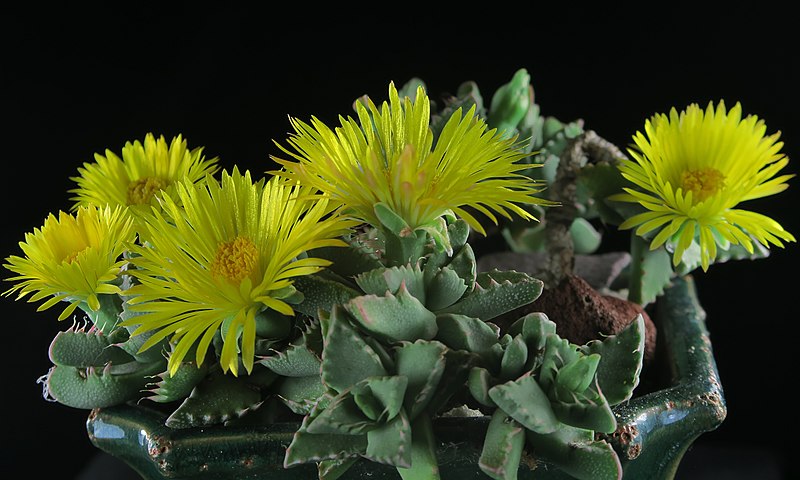
Native to hot, dry areas of the Eastern Cape province of South Africa, this clump-forming succulent perennial is a member of the fig-marigold family, Aizoaceae, that also includes ice plant, living stones, and New Zealand spinach. The plants grow 3″ tall and form a rosette of thick, crowded leaves that are up to 1.5″ long, triangular in shape, and green to gray-green with distinct white flecks and sometimes tinted with red. The margins of the leaves have 9-10 soft teeth with long soft bristles and resemble the open jaws of a tiger but are useful for collecting moisture from the air and sending it to the roots. From fall to early winter, 2″ wide, yellow, daisy-like flowers appears with 100-120 long, thin, silky petals that are actually modified stamens. Tiger jaw is easy to grow and makes an interesting specimen for a dish garden but can be grown in a rockery in warm climates. The flowers open about noon and close at night. The genus name, Faucaria, comes from the Latin word faux meaning jaw and refers to the appearance of the leaf margins. The specific epithet, tigrina is the Latin word for tiger.
Type: Succulent perennial
Bloom: Yellow daisy like flowers in fall to early winter
Size: 3″ H
Light: Bright light with at least 3-4 hours direct sunlight for best blooming
Soil: Gritty, well-drained (commercial cactus potting soil)
Hardiness: Zones 9-11
Care: Feed every 2 weeks during the growing season with dilute fertilizer; reduce water in winter; repot every 2 years
Pests and Diseases: Mealybugs
Propagation: Offsets, seed
Companion Plants: Other small succulents suitable for dish garden
Outstanding Selections: None available
Photo Credit: John Rusk Wikimedia Commons